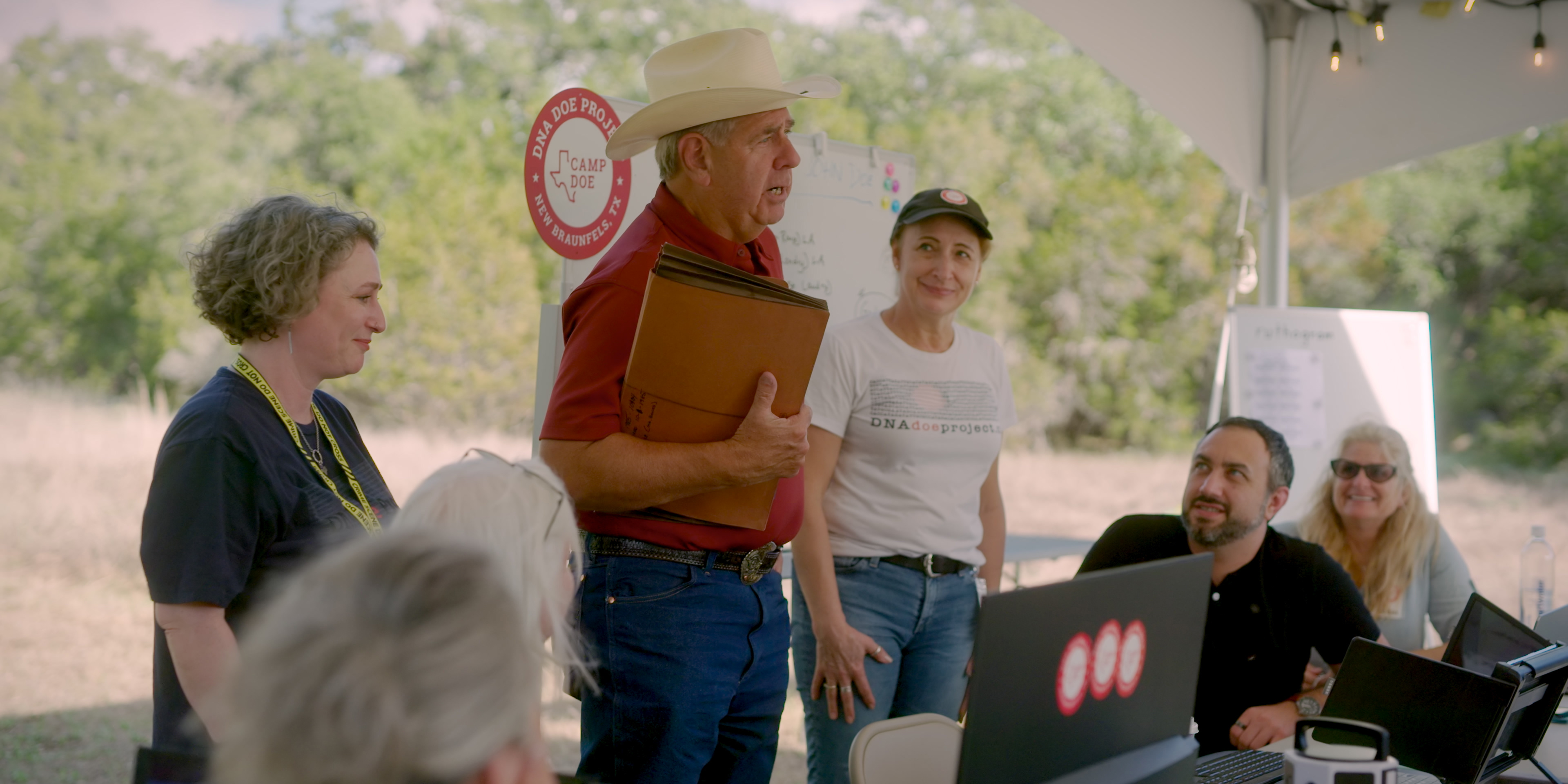The last 70 days of Van Gogh
Published 12:25 am Wednesday, August 16, 2017
Post-Impressionist painter completed best-known works toward end of his life
Mary Richardson / Special to American Press
Who killed Vincent Van Gogh?
I didn’t mean to be thinking about that. I was in the countryside of France, and it was a beautiful day. But we were in a pretty graveyard just outside the village of Auverssur-Oise, where Van Gogh spent his last three months on earth, and right in front of me were two ivy-covered graves, one for Vincent Van Gogh and the other for his beloved brother, Theo. I couldn’t help it.
How had Vincent Van Gogh ended up in this beautiful place where, in only 70 days, he painted more than 70 masterpieces — and the place where he died and was buried.
My husband, Joe, and I had come to this village on a kind of pilgrimage. Only days earlier, I had been surrounded by vibrant colors and swirling brush strokes of Vincent Van Gogh’s paintings in the Musee d’Orsey in Paris. His paintings made my heart thump, and I wanted to know more, see more. I wanted to walk in his shoes, and I knew I could do that in this time-stilled village.
We took a short train ride from the Gard du Nord in Paris. In less than an hour, we were at the same station where Van Gogh himself disembarked in May, 1890. It looked like we had stepped into a Van Gogh painting. Sunflowers were in full bloom, so many they almost hide the shops across the street.
We made our way to the tourist bureau and were given a brochure of “Les Sites Remarquables.” The city has created a map to guide visitors to the sites that were important in Van Gogh’s life in Auvers-sur-Oise. In many places, the city has installed signs with reproductions of the works that Van Gogh painted on the site. Although definitely not a tourist town, the city has turned itself itself into an open-air museum dedicated to Vincent Van Gogh.
We walked down to the river Oise. We walked to the Auberge Ravoux, the house where he had a sparse room in the attic, and to the Maison du Docteur Gachet, the home of the doctor who was supposed to cure Vincent, but who failed. We went through an interactive museum at the Chateau d’Auvers that has been designed to put people right into scenes from the Impressionist years. We went inside the gothic church, where Van Gogh painted my personal favorite of his works, and saw through the cool, dappled light falling gently on the saints inside. We explored the Absinthe Museum, dedicated to the green drink that Van Gogh was all too fond of.
Then we walked outside the village. We stood in the field where he painted Wheatfield with Crows and tried to imagine the crows. And then we went to the graveyard. And that’s when I started thinking about death, because things weren’t adding up. The city has put up a sign about the outpouring of affection and support for Van Gogh upon his death. But I had read the book Van Gogh: The Life, written by Pulitzer prize winning authors Steven Naifeh and Gregory White-Smith in 2011. The two stories didn’t match.
EARLY LIFE
Vincent Van Gogh was born in 1853 in the southern part of The Netherlands. He never got along with anyone and “normal” relationships just didn’t happen to Vincent. His parents rejected him on numerous occasions and wanted to commit him to a mental hospital. His love interests invariably said “no.” One said “No, nay, never!” — and yet he continued to pursue her.
He famously cut off his ear and gave it to a prostitute. His numerous breakdowns were caused by such things as stress, alcohol, poor diet, vitamin deficiencies, smoking and insomnia. Finally he committed himself to an asylum in Saint Remy, but he kept painting. By early 1890, he could no longer paint, read, or write. When approached by anyone, he would lash out or recoil violently. No one dared come near him, even his one champion in life, his younger brother Theo.
Then a young, decadent journalist and art critic named Albert Aurier discovered his work, calling him “exciting and powerful,” “profound and complex,” and “unbelievably dazzling.” Vincent’s health improved.
In May of 1890, he wrote to Theo “I must get out of here.” Two weeks later, Van Gogh
— now a celebrity, thanks to Aurier — was pronounced “cured,” and he left the asylum for good.
There was a semblance of a plan. Theo would again provide him with money, canvas, paper, tubes of paint, and love. The artist Camille Pissarro had recommended a homeopathic doctor, Paul Gachet who lived at Auvers sur Oise. According to Pissarro, Gachet understood artists and had treated Manet, Renoir, and Cezanne. When Theo described Vincent’s sickness, he replied “… he didn’t believe it had anything to do with madness, … he could guarantee your recovery.” (When Vincent actually met the dyed-blond doctor he declared him “sicker than I am.”)
EMERGING ARTIST
Vincent had come to Auvers to find solace in the little village with its half timbered houses and fresh country air. He painted thatch-roofed cottages, vineyards, gardens, great chestnuts trees and their roots, the river, the unbroken expanse of crop rows and furrows. He painted sunflowers and poppies and voluptuous trees. He painted the Gothic church against a cobalt blue sky, with windows like patches of ultramarine, and its 12th century walls and buttresses rising out of wildflowers in the grass. He painted a magical land that promised a life of contentment for its people.
But that didn’t extend to him, of course. The people ridiculed him for being unkempt, for his drunkenness, for his ugly, mutilated ear. The village youth chased him through the streets shouting “crazy, crazy.” But the young men who were in Auvers on summer holiday were much more evil than the locals. They would pretend to be his friend and buy him drinks, especially his favorite, absinthe. Then they would put salt in his coffee or a snake in his paint box. But he kept painting, starting at 5 a.m. every day. He painted some of the best works of his life in Auvers.
FINAL DAYS
Everyone agrees that on July 27, 1890,Vincent had lunch at the Ravoux Inn, then slung his bag of paints, brushes and his heavy canvases to return to painting. And everyone agrees that he staggered back to his room that night without any painting materials — and with a bullet in his stomach. He died two days later, in Theo’s arms, of his injuries.
The next part of the story is uncontested. The local priest at the cathedral Vincent had painted refused to bury him because 1) he had committed suicide, and 2) he was a Protestant. So Theo arranged for the ceremony to take place at the Auberge Ravoux.
Then back to fiction. According to a plaque at his grave, the whole town rallied to him. The hotel, it reads,“was decorated with sunflowers, yellow dahlias and the artists’s last painting. After the priest at Auvers refused the loan of the hearse, bier and ropes, his colleague at Merysur-Oise resolved the situation by supplying what was needed to transport Van Gogh’s coffin from the Aberge Ravoux to the Auvers cemetery. The fields were drenched in dazzling sunlight. Doctor Gachet, Vincent’s friend and doctor made a moving speech before the sorrowful mourners.”
Not so, say Naifeh and Smith-White. Most of the artists Vincent knew (and quarreled with) didn’t even come. Dr. Gachet brought in some local people, including some artists who had avoided Vincent while he was alive. No one from his family came, except Theo. Dr. Gachet muttered some vague praise for a man he barely knew, and left most people confused. Then everyone disappeared, and only Theo was left, sobbing. Six months later, Theo died. His widow eventually moved his body to be buried in the lonely cemetery, next to Vincent.
UNANSWERED QUESTIONS
The question that is unanswered is what happened between the time Vincent left to paint after lunch and when he came home, shot. Within a day after he died, the villagers developed a story. A woman who had been a child at the time remembers it like this: During the afternoon, in the deep path that lies along the wall of the chateau — as my father understood it — Vincent shot himself and fainted. The coolness of the night revived him. On all fours he looked for the gun to finish himself off, but he could not find it. Then Vincent got up and climbed down the hillside to return to our home.
But Naifeh and Smith-White pose many questions: How could Vincent, so badly wounded, have climbed down the steep, wooded slope from the field to the Ravoux Inn? Where were his painting materials? Where had he gotten the gun? Revolvers were rare at the time. Where was the gun? Even after searching in broad daylight, nothing was ever found. Why did he aim for his heart, not his head? Why did he miss? And why did he not leave a suicide note for his beloved brother?
Vincent did not shoot himself, they conclude. Instead, his death was the result of bullying and an ensuing accident.
The leader of the boys who tormented Vincent was a 16-year-old named René Sécrétan, son of a rich pharmacist from Paris. René was nicknamed “Buffalo Bill” because he strutted like a cowboy and because he habitually wore a Buffalo Bill costume he had bought at Bill Cody’s Wild West Show. He completed his costume with a revolver — an old .380 caliber “pea-shooter” that he later said, “went off when it felt like it.”
The same night as the shooting, “Buffalo Bill” returned to Paris.
René Sécrétan lived to be a successful lawyer in Paris. When he was 83 years old he gave extensive interviews about what happened in Auvers. He bragged in horrifying detail about how he had bullied Vincent, but he — now being a lawyer — never actually admitted firing the shot. Based on those interviews and others, Naifeh and Smith-White have developed a scenario of what really happened that day in May, 1890.
René had a history of teasing Vincent in a way intended to provoke him to anger, they wrote, and Vincent had a history of violent outbursts, especially when under the influence of alcohol. “Once the gun in René’s rucksack was produced, anything could have happened — intentional or accidental — between a reckless teenager with fantasies of the Wild West, an inebriated artist who knew nothing about guns, and an antiquated pistol with a tendency to malfunction.”
The legends of a tormented artist trying to commit suicide in a wheat field and the kindness of others after his death live on. Perhaps it makes a better story.
But something else lives on also, and that is the artwork of Vincent Van Gogh. His fields are still golden, his sky is still cobalt, and his sunflowers still bloom. Perhaps due to his paintings, Auvers-sur-Oise is still a magical place.
*This story first appeared in the American Press on November 1, 2015.
The Mairie (town hall) looks just like it did when Van Gogh painted it, minus the flags, garlands and Chinese lanterns that were hanging in preparation for Bastille Day. (Mary Richardson/Special to the American Press)





